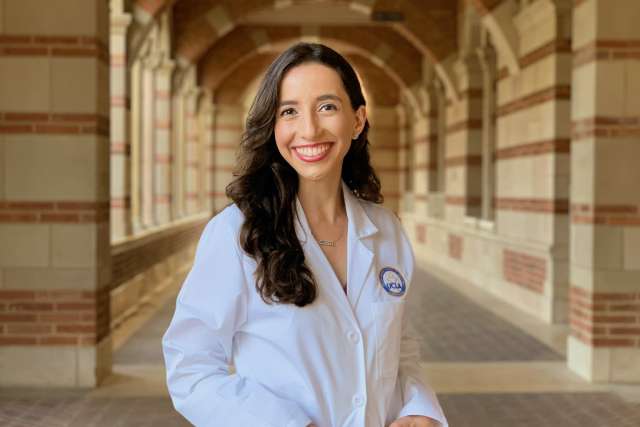NOT LONG AGO, A FRIEND ASKED ME HOW I, with hearing loss, have been able to actively engage in conversations when widespread use of face masks prevents utilization of reading lips or facial expressions. It is an excellent question, one that I have frequently received since the start of the COVID-19 pandemic. While I do have significant hearing loss, I am hard-of-hearing, not deaf, and I use my residual hearing to communicate with others. It is a process I have perfected over years of intense speech therapy, auditory verbal therapy and practice.
Nevertheless, my friend was surprised to learn that I could hear at all. Her response was not unusual. Most people, upon discovering my significant hearing loss, cannot understand how I navigate a world that is heavily based on hearing. Undoubtedly, such activities as speaking over the phone, paying attention in the classroom setting and enjoying music require intense effort on my part to listen and comprehend, relying on my re - sidual hearing and my hearing aids and capitalizing on favorable acoustical settings.
But many people — perhaps nearly everyone, in fact — think of disability in binary terms, like an on-off switch. Either one can or cannot hear. They think of hearing loss as akin to switching off the audio of a video rather than playing the video with the sound turned way down so it is muffled, soft and difficult to discern.
Like many people with a disability, I fall somewhere in the middle of the spectrum. With my residual hearing, I am “too hearing” to be considered medically deaf but, at the same time, “too deaf” to be considered hearing. Yet, hearing loss is often perceived as a binary condition: A person either has the disability or does not. In reality, disability is highly complex, nuanced and diverse, with a wide range of experiences. It is anything but binary.
For example, like many people with hearing loss, I can hear some sounds better than others, depending on the frequency and volume of the sound and the level of background noise. In particular, I hear low-frequency sounds, bass, better than high-frequency sounds, treble. The sounds I am least able to hear are those within the range of speech.
All-or-nothing — binary — categorizations of disabilities hurt people with disability. This is especially true for those with “invisible” disabilities, such as hearing loss. One of the biggest challenges is trying to convince others that the disability exists. Any appearance of being “normal” by someone with a disability makes it all the more difficult for others to appreciate the wide prevalence of “ableism” — discrimination against people with disabilities — and the constant physical and attitudinal obstacles people with disabilities face. Sometimes “normal appearance” is perceived as a compliment along the lines of, “You don’t seem disabled.” Other times, it is meant to imply that we are exaggerating or faking our disabilities. I often am told that I “hear just fine.”
Regardless of where along the spectrum any of us with a disability fall, most of us require accessibility accommoda - tions, which, in turn, necessitate disclosing our disability. What people fail to realize is that disclosing a disability and request - ing accommodations involves divulging personal conditions, swallowing pride and expending a tremendous amount of time and effort. Even with accommodations, we almost always are still at a significant disadvantage since, at best, accessibility addresses access — equality, not equity. Having to constantly prove our disabilities often prevents us from securing the proper accommodations and support we desperately need.
A binary classification of disability suggests that disabilities and diagnoses within the middle of the spectrum are some - how less challenging. For example, the degrees of hearing loss are innocuously named mild, moderate, severe and profound. Whether we realize it or not, the language used to categorize disability influences the way patients are diagnosed and how they view their disabilities. Admittedly, specialists may have encountered thousands of people with a particular disability, but medical severity does not correlate with personal struggle. The experiences of people with moderate disabilities should not be relegated as less difficult; rather, they should be understood as different.
Treating disability as something that occurs along a spec - trum will transform the way society understands and empowers people with disabilities. As the world begins to prioritize social justice, I hope that the public starts to include one of the largest minorities in America, people with disabilities, in conversations about justice, equity, diversity and inclusion.
